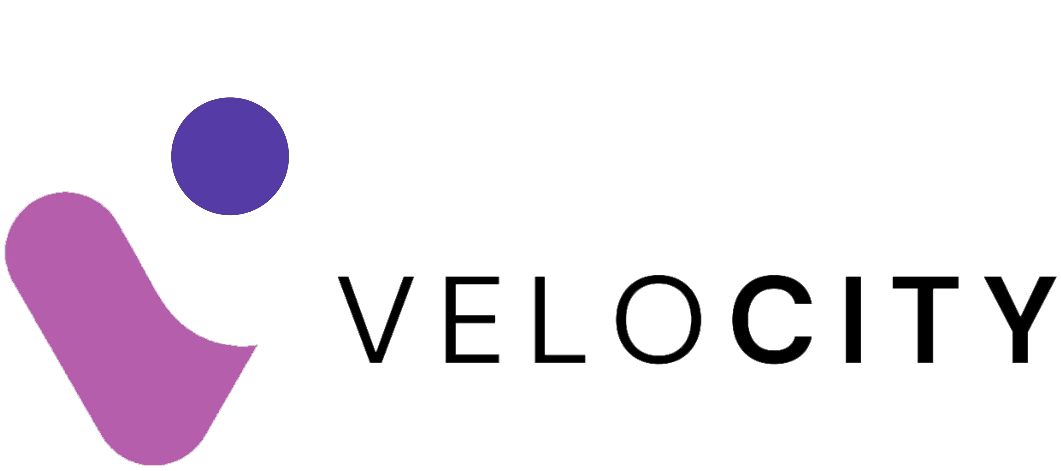Services List
Customer Relationship Management (CRM) systems have become a crucial tool for businesses aiming to streamline operations, enhance customer experiences, and improve sales performance. However, implementing a CRM successfully is not without its challenges. Many organisations struggle with CRM user adoption, which can lead to low ROI and frustrated employees.
This article explores the most common barriers to CRM adoption and provides actionable solutions to overcome them.
%20(2)-1.jpg?width=1750&height=875&name=Feature%20images%20velocity_%202500%20x%201500%20(1750%20x%20875%20px)%20(2)-1.jpg)
Covered in this article
Resistance to Change
Lack of Proper Training
Poor User Experience and Interface Complexity
Insufficient Leadership Support
Data Quality Issues
Lack of Integration with Other Tools
Unclear Objectives and Poor Implementation Strategy
Employee Workload Concerns
Conclusion
FAQs
Resistance to Change
One of the most significant challenges businesses face when implementing a CRM system is employee resistance to change. Employees accustomed to traditional methods or legacy systems often feel overwhelmed or threatened by new technology.
Solution:
- Clear Communication: Explain the benefits of the CRM and how it will make their jobs easier.
- Employee Involvement: Involve key users in the decision-making and implementation process.
- Gradual Implementation: Introduce the CRM in phases rather than all at once.
2. Lack of Proper Training
One of the primary reasons for low CRM user adoption is a lack of proper training. Employees may feel overwhelmed by the CRM system’s features, leading to frustration and underutilisation. Without adequate training, businesses risk poor data management, inefficient workflows, and resistance to using the system.
Solution:
- Comprehensive Training Programmes: Provide hands-on training, video tutorials, and role-based learning tailored to different teams.
- Ongoing Support: Offer refresher sessions and dedicated support channels to assist users in mastering the CRM.
- Customised HubSpot Training: As a Diamond HubSpot Partner, Velocity specialises in onboarding businesses onto HubSpot CRM. Our expert-led training ensures that teams understand how to maximise HubSpot’s features, streamline their sales processes, and improve customer relationships.
By investing in the right training approach, businesses can boost CRM user adoption, increase efficiency, and ensure long-term success with their CRM system. Velocity’s HubSpot CRM training empowers teams to work smarter and leverage the platform’s full potential.
3. Poor User Experience and Interface Complexity
A CRM system that is not user-friendly or has an overly complex interface can discourage users from adopting it. If employees find it difficult to navigate the system, they will revert to old habits.
Solution:
- Choose a User-Friendly CRM: Select a CRM with an intuitive interface and minimal learning curve.
- Customisation: Tailor dashboards and workflows to fit the specific needs of different teams.
- Regular Feedback: Collect user feedback and adjust configurations to improve usability.
Read more: How To Choose A CRM For Business
4. Insufficient Leadership Support
CRM adoption often fails when there is a lack of support from leadership. If senior management does not prioritise the CRM system, employees will not see its importance.
Solution:
- Top-Down Approach: Ensure executives and managers actively use and promote the CRM.
- Set Clear Goals: Define measurable objectives that leadership can track and communicate.
- Incentives and Recognition: Reward teams that successfully integrate the CRM into their workflows.
5. Data Quality Issues
Poor data management can lead to distrust in the CRM system. If employees encounter duplicate records, outdated information, or incomplete data, they may avoid using the CRM altogether.
Solution:
- Standardised Data Entry: Establish clear guidelines for entering and maintaining CRM data.
- Automated Data Cleaning: Use AI and automation tools to regularly clean and update records.
- User Accountability: Assign specific roles for data management and validation.
6. Lack of Integration with Other Tools
If a CRM system does not integrate with existing business tools, it can become a burden rather than an asset. Employees will resist switching between multiple platforms to complete simple tasks.
Solution:
- Select a CRM with Integration Capabilities: Ensure the CRM integrates with essential software such as email, marketing automation, and customer support tools.
- API and Third-Party Plugins: Leverage APIs and connectors to enable seamless communication between systems.
- Automate Workflows: Reduce manual data entry by automating processes across integrated tools.
7. Unclear Objectives and Poor Implementation Strategy
Without clear goals and an implementation plan, businesses may struggle to align their CRM usage with company objectives.
Solution:
- Define Success Metrics: Identify key performance indicators (KPIs) to measure CRM success.
- Pilot Programme: Test the CRM with a small team before a full rollout.
- Continuous Improvement: Regularly assess and refine CRM strategies based on user feedback and performance data.
8. Employee Workload Concerns
Employees may see CRM adoption as an additional workload rather than a productivity tool, leading to reluctance.
Solution:
- Highlight Time-Saving Features: Demonstrate how automation, templates, and reports reduce workload.
- Reduce Manual Tasks: Implement AI-powered features like predictive analytics and automated follow-ups.
- Gamification: Introduce friendly competition and rewards to encourage adoption.
Conclusion
CRM user adoption is a critical factor in the success of any CRM implementation. Overcoming these challenges requires a combination of effective training, leadership support, system usability, and strategic integration. By addressing these barriers proactively, businesses can ensure their CRM system becomes a valuable asset rather than a burden.
Are you struggling with CRM user adoption? Velocity can help you develop and implement a CRM strategy that drives user engagement and business growth. Contact us today to get started!
FAQs About CRM User Adoption
1. What is CRM user adoption?
CRM user adoption refers to the process of employees and teams embracing and effectively using a Customer Relationship Management (CRM) system. Successful adoption ensures that users leverage the CRM’s features to improve productivity, customer relationships, and business growth.
2. Why is CRM user adoption important?
Without high CRM user adoption, businesses fail to realise the full benefits of their CRM system. Poor adoption leads to inefficiencies, data inaccuracies, and reduced ROI. Encouraging widespread use ensures streamlined workflows, better customer insights, and improved decision-making.
3. What are the biggest challenges in CRM user adoption?
Some of the most common barriers to CRM user adoption include:
- Resistance to change from employees.
- Lack of proper training and support.
- Poor user experience and complex interface.
- Insufficient leadership support.
- Data quality issues and duplicate records.
- Lack of integration with existing tools.
- Unclear objectives and implementation strategy.
4. How can businesses encourage CRM user adoption?
To improve CRM user adoption, businesses should:
- Provide comprehensive training and ongoing support.
- Ensure leadership actively promotes CRM usage.
- Choose a user-friendly and customisable CRM system.
- Set clear goals and measure performance metrics.
- Integrate the CRM with other business tools to streamline workflows.
- Address employee concerns by demonstrating time-saving features.
5. What role does leadership play in CRM user adoption?
Leadership plays a crucial role in CRM adoption by setting expectations, providing resources, and leading by example. When managers and executives actively use and advocate for the CRM, employees are more likely to follow suit.
6. How long does it take to achieve full CRM user adoption?
The timeline for CRM user adoption varies depending on company size, training effectiveness, and employee engagement. A well-structured implementation plan with phased rollouts, continuous support, and performance tracking can help achieve full adoption within 3-6 months.
7. What training methods are most effective for CRM adoption?
The best CRM training methods include:
- Hands-on workshops and live demonstrations.
- Role-based training tailored to different departments.
- Online courses, video tutorials, and helpdesk resources.
- One-on-one coaching for key CRM users.
- Regular refresher sessions to reinforce learning.
8. How can businesses measure CRM user adoption success?
Key metrics to track CRM user adoption include:
- Number of active users logging in daily or weekly.
- Percentage of employees completing CRM-related tasks.
- Data accuracy and completeness in the CRM.
- Reduction in manual processes due to automation.
- Increased customer engagement and improved sales performance.
9. What happens if employees resist CRM adoption?
If employees resist CRM adoption, businesses should:
- Communicate the benefits clearly and align them with employee needs.
- Address concerns and frustrations through open discussions.
- Provide additional training and support.
- Offer incentives or recognition for successful adoption.
- Simplify CRM usage by customising dashboards and workflows.
10. Can automation improve CRM user adoption?
Yes, automation can significantly enhance CRM user adoption by reducing manual tasks and improving efficiency. Features like automated reminders, workflow triggers, and AI-powered insights help employees save time and encourage consistent CRM usage.
11. How can businesses maintain long-term CRM user adoption?
Long-term CRM user adoption requires continuous engagement. Businesses should:
- Regularly update training materials and provide refresher sessions.
- Gather user feedback and improve CRM usability.
- Introduce new features gradually to prevent overwhelming users.
- Foster a culture of CRM reliance through leadership advocacy.
12. How can Velocity help improve CRM user adoption?
Velocity provides expert CRM consulting, training, and implementation strategies to help businesses maximise CRM adoption. Our tailored approach ensures seamless integration, user engagement, and measurable success. Contact us today to optimise your CRM strategy!






